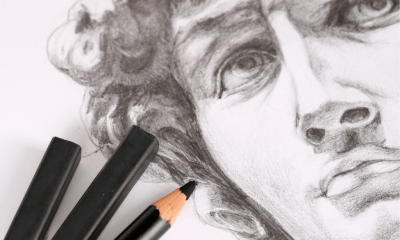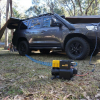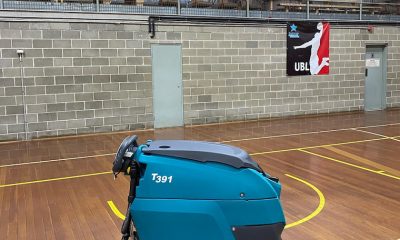Arts & Entertainment
Flag Etiquette at Sea: Everything You Need to Know About the Australian Ensign
Flag etiquette is an important part of the nautical tradition. Centuries of sailors and seafarers have passed down a set of customs as a way to show respect for the flag and the country it represents. Being unaware of your commitments while at sea at home or abroad could cause you to offend others and send a signal you did not intend to.
In Australia, the proper use of ensign flags is not only a matter of respect but also a legal obligation under Australian law. In this article, I’ll cover everything you need to know about the Australian Ensign flag, including its history, protocol, and ceremony.
History of the Australian Ensign
The Australian Ensign has a rich history dating back to 1901. The original design featured the British Union Jack in the top left corner, symbolising Australia’s ties to the British Empire. The remainder of the flag was dark blue with a large white Commonwealth Star in the centre and five small stars representing the Southern Cross constellation.
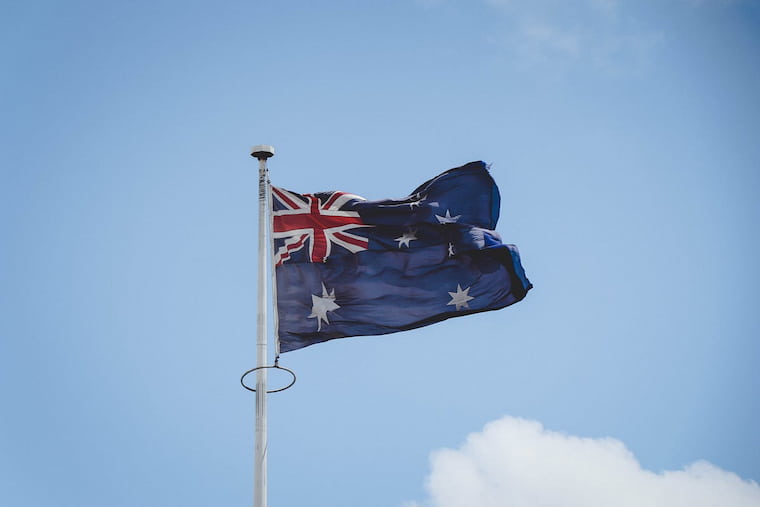
In 1954, the design was revised to include the current version, which features a blue background with the Union Jack in the top left corner and the Southern Cross on the right side of the flag. The design is simple, yet elegant, and is instantly recognizable. The Southern Cross is an important symbol for Australia, representing the country’s location in the southern hemisphere and its unique place in the world.
What Is the Australian Ensign Protocol?
Proper display of the Australian Ensign flags is essential, both as a sign of respect and to avoid any legal complications. The banner should be flown only from the stern of a vessel and should always be hoisted higher than any other banner.
When the Australian Ensign is flown, no other banner should be flown above it, with the exception of the Royal Australian Navy’s flag. If multiple banners are flown, the Australian Ensign should be in the centre and higher than any other.
It is important to note that this national symbol should never be flown upside down, as this is a sign of distress. If it becomes worn or damaged, it should be replaced immediately. If the flag needs to be lowered, it should be done slowly and with respect.
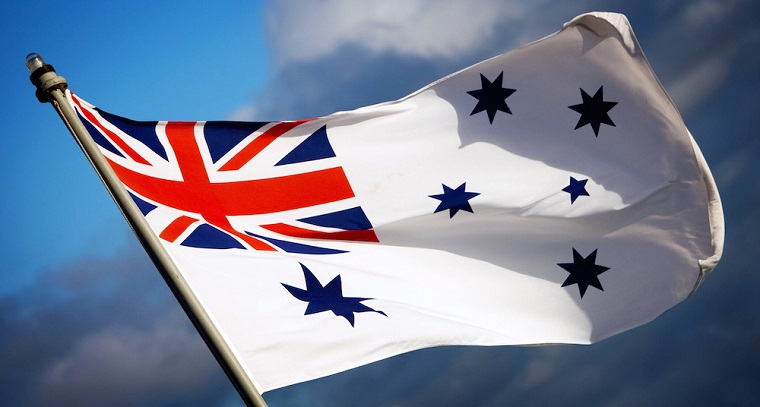
In addition to these guidelines, there are also rules regarding the size and placement. The size should be proportional to the size of the vessel, with larger vessels requiring larger banners. It should also be placed on a staff that is long enough to ensure that it does not touch the water when the vessel is underway.
Half-masting the banner is a sign of mourning or respect. When doing so, it should be hoisted to the top of the mast and lowered to the halfway point. When lowering it from half-mast, it should be raised to the top of the mast before being lowered completely.
Finally, if the ensign Australia banner is flown at night, it must be properly lit so that it is visible from a distance. This can be done using a light on the staff or a separate light placed nearby. If using a separate light, it should be positioned so that it’s illuminated from above. Failure to do so can result in fines or legal consequences.
Some Dos and Don’ts
To show respect for the Australian Ensign, there are certain behaviours to avoid. For example, it should never be used as decoration or clothing, and it should never be defaced or altered in any way. Additionally, it is important to avoid any behaviour that might be seen as disrespectful or insulting towards this symbol, such as throwing it on the ground or using it to wipe up spills.
It is also important to note that there are alternative flags to use in certain circumstances. For example, the Aboriginal or Torres Strait Islander banner can be used to represent Indigenous Australians, while the Boxing Kangaroo banner is often used as a sporting symbol.
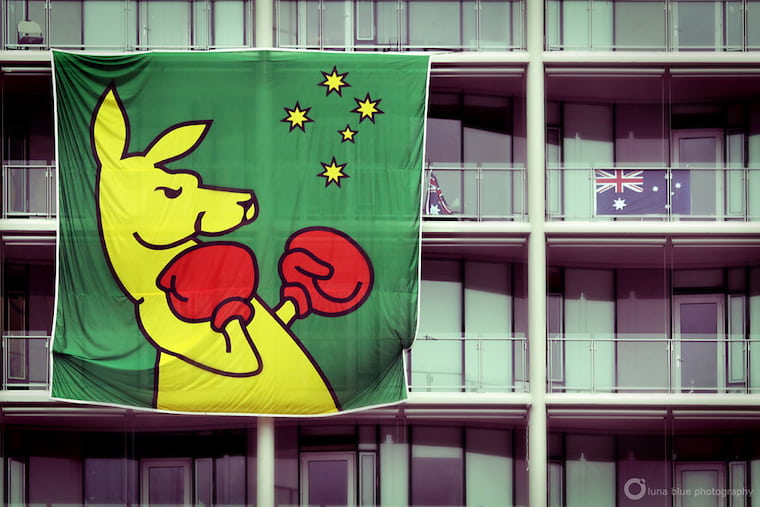
Proper care and handling are also important. When storing the banner, it should be folded properly and kept in a dry, clean place. If it gets dirty, it should be washed gently with mild soap and water and allowed to dry completely before being stored.
The Official Ceremony
Raising and lowering the Australian Ensigns is often accompanied by a ceremony. This ceremony can take many different forms, depending on the occasion and the location. For example, a simple ceremony might involve raising the banner to the sound of a bugle or trumpet. More elaborate ceremonies might include speeches or other performances.
The significance of the flag-raising ceremony cannot be overstated. It is a way to show respect for this national symbol and the country it represents. It is also an opportunity to reflect on the sacrifices and accomplishments of those who have fought and worked to build a better Australia.
Writing for the blog since 2012, Chris simply loves the idea of providing people with useful info on business, technology, vehicles, industry, sports and travel – all subjects of his interest. Even though he sounds like quite the butch, he’d watch a chick flick occasionally if it makes the wife happy, and he’s a fan of skincare routines though you’d never have him admit that unless you compliment his impeccable skin complexion.







